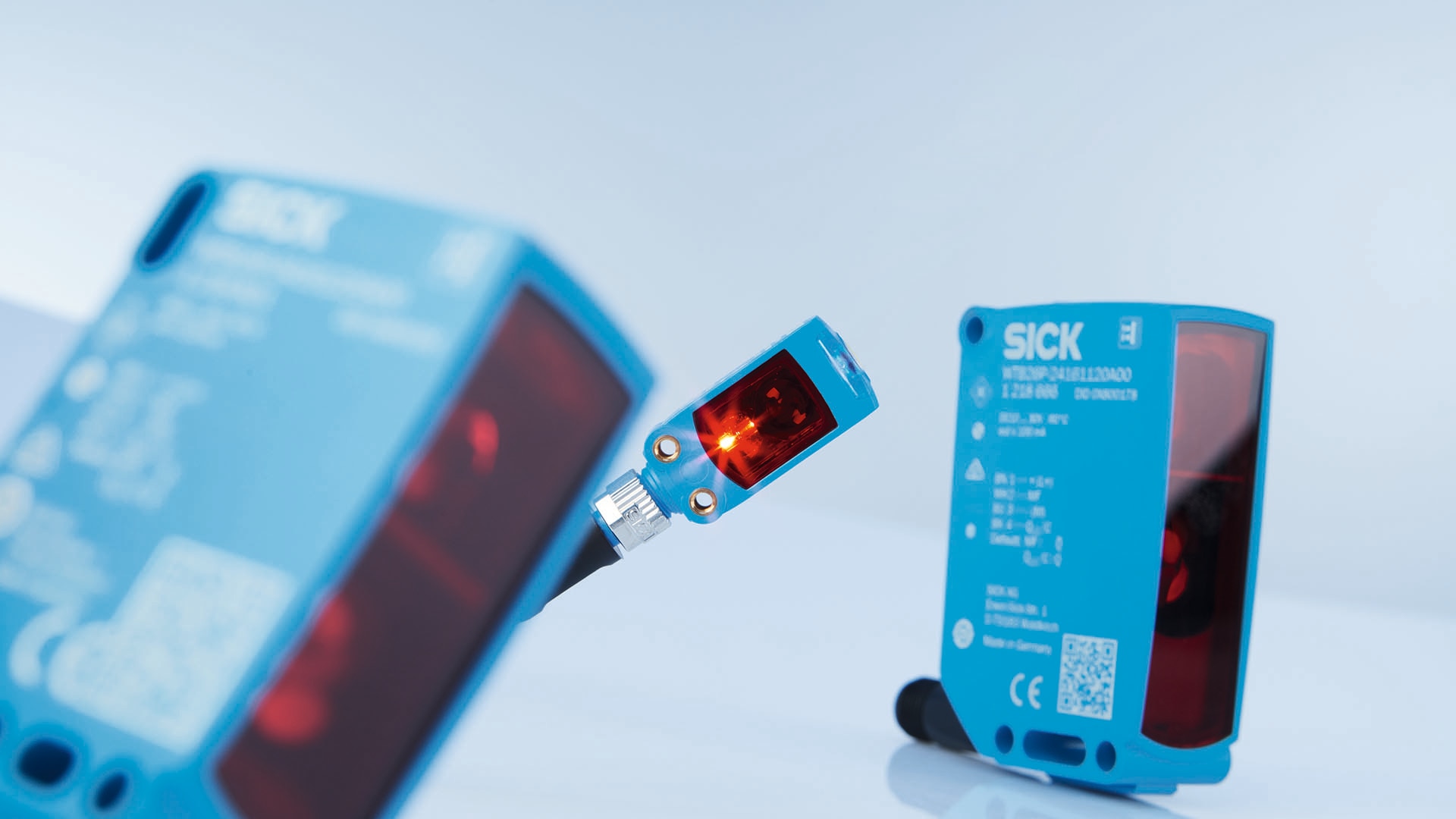The latest generation of photoelectric sensors
The photoelectric sensors from SICK offer a simple and perfect solution for every requirement. Whether in tight installation situations, for large detection distances, or with challenging objects – object detection is particularly reliable and simple using the new sensors from SICK. Highly automated processes require reliable object detection. But no matter what challenges have to be mastered, the photoelectric sensors from SICK are the intelligent solution for many demanding applications. The high detection quality of SICK sensors ensures accurate object detection results.
Photoelectric sensors from SICK are also characterized by their high level of ruggedness and durability. The resulting reduction in downtime leads to increased productivity of your machines and systems, which gives you a decisive competitive advantage.
The right sensor for your requirements
The key: Different technologies and light sources can be integrated into different housing types made from a wide range of materials. This provides a high level of flexibility when designing systems and configuring applications. Despite the wide variety of products and the broad range of applications for which they can be used, the operation of the individual variants is almost identical and also quite intuitive. Even complex systems with many different photoelectric sensors are suitably easy to operate, which reduces the amount of maintenance required.

DIVERSE APPLICATION POSSIBILITIES THANKS TO DIFFERENT PRODUCT VARIANTS
The right type for your mounting situation
In certain installation situations, the housing must be particularly compact, while in others, a maximum sensing range is what counts. To ensure a powerful and reliable solution is at hand for every need, the photoelectric sensors from SICK are available in a variety of housing types. This provides you with a high level of flexibility when selecting a sensor suitable for your space situation. For extra convenience, all types have standardized mounting options.

The right housing material for your application
Rugged and reliable: The photoelectric sensors are available in different housing materials. In addition to a zinc die cast housing, SICK also offers a VISTAL® plastic housing that can withstand even high temperatures as well as being mechanically resilient and chemically resistant. Regardless of the application, you get a reliable solution that suits your specific requirements. |

The correct light source for your detection task
The right choice of light source depends on the particular application and the resulting requirements. The following light sources are available for the photoelectric sensors from SICK: Laser red light for high precision, infrared LED for greater sensing range, and PinPoint LED as an all-rounder variant. The photoelectric sensors also have different light spot geometries and measurement principles. This enables specific detection tasks to be solved easily and especially reliably. It also gives you freedom of choice when selecting the light source and provides you with the right sensor for your requirements. |

